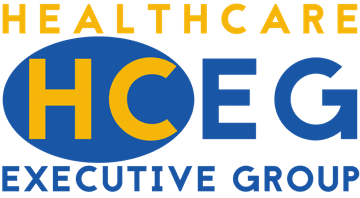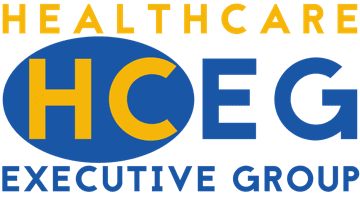Introduction
In a world where consumers can quickly and easily compare costs and buy nearly any item they desire online from cars to plane tickets it is safe to say that consumer’s expectations around the purchasing experiences are higher than ever. However, it’s not just the retail sector that has figured out how to streamline these web-based and omni-channel encounters. Online banking, travel, hospitality and other service-oriented organizations have been quick to follow its lead. Yet the health care industry has lagged far behind in these efforts. There are many reasons for this delay, including the following factors:
- Health care pricing is incredibly varied and involves a complex interplay between each provider’s negotiated rates with the payer and the consumer’s own benefit design and deductible balance.
- Provider bills are reconciled and payments are received weeks or even months after service is rendered through the claims submission, adjudication and reimbursement process with the insurer.
- Health care decisions were not always as consumer-driven as they are currently. In the days of HMOs and other restrictive plan designs, providers and payers served as gatekeepers often deciding where, when and what kind of treatment was best for a patient.
- In the recent past, the insured’s cost share for utilizing health care services was significantly lower. Most of the insured’s cost resided in the premium payment. With little or no financial out-of-pocket responsibility at the point-of-service, consumers were decidedly less concerned about comparison shopping for care.
Shining a light on cost variation and avoidable utilization
There is no doubt that consumer concerns about their rising share of costs and experience dissatisfaction are well founded. Many experts in the industry will admit that there is widespread pricing failure and lack of a common sense experience across the traditional health care system. Cost variation within and among payers, providers and geographies is widespread. One Blue Cross and Blue Shield Association report shows that costs for knee and hip procedures can vary by as much as 313 percent. Another industry report shows that for MRIs, the most expensive hospital in the nation has prices twelve times as high as the least expensive hospital. However, cost variation also plagues the ambulatory care side of the industry. Certain out-of-network providers bill up to 100 times more than other providers for the same services. Research shows that 71 percent of emergency room visits could have been avoided through consumer selection of more appropriate, lower-cost care options.
Transparency tools fall short
Many health plans have certainly attempted to make health care service costs and decision-making better for consumers. Most payers have implemented some type of transparency tool for their members. However, there are problems inherent in using this approach as a standalone band aid approach that addresses a symptom (unknown price estimates pre-service) and not the root cause (pricing failure in health care, known and reliable prices pre-service). These tools are not electronically actionable or transactional, and are often inaccurate, resulting in surprise consumer EOBs that dismantle consumer trust and confidence instead of building it. That’s because pricing information in transparency tools is often based on batch, not real-time, data, regional allowed amount averages at worst, or at best, historical paid claims costs. However, even historical claims payment information can easily become outdated as provider contracts change and it is more limited in its usefulness in rural areas, where a health plan may only have a small sample size of data. Consumers inherently doubt and distrust the accuracy of price quotes or estimates that are not immediately transactional or binding.
Many consumers also find these first generation price transparency and cost estimating tools limited in relevance for everyday health care needs. That’s because many of these tools are geared towards high cost acute services. Most also lack instant gratification transaction processing capabilities and pricing assurance. Perhaps it’s not a surprise then that while industry surveys show that 98 percent of health plans say they offer cost calculator tools, only two percent of members actually use them.
Addressing the shortfalls of today’s fragmented system
Consider the convenience and value of the real-time e-commerce purchasing approach compared to the traditional health care shopping and transparency model. In the traditional model, consumers have to seek out information from different stakeholders and avenues. There is no consistency, convenience or sense of ongoing engagement. Consumers may turn to their health plan for information about network providers and benefits, search for provider reviews on third-party websites or by asking friends and family, and then utilize transparency tools to approximate their costs. Then they must contact providers directly to confirm network status and schedule office visits. Finally, payment itself can be a complex interplay between point-of-service payments such as copays and additional balance payments submitted via mail after benefit reconciliation is complete, and this process typically takes more than 30 days.
This fractured and disconnected traditional process can only be understood through research and heavy lifting from consumers actively seeking out information from all of these stakeholders in a variety of different ways. Expecting consumers to navigate through this maze of information seeking and experience is clearly one reason why health care has failed to effectively engage, activate and influence consumers enough to significantly move the needle on cost and quality. This legacy process is disjointed, frustrating and time-consuming. As a result, many consumers will simply give up trying to make an informed decision and will select providers based on factors such as geography and availability.
Using e-commerce strategies to enable health care purchasing modernization
In order to support consumers throughout their entire health seeking journey, health care organizations must borrow from retail and other sectors with proven consumer engagement strategies and successful histories of transforming into digital enterprises. The global e-commerce industry saw impressive growth in 2014 with goods and services worth $1.5 trillion bought by shoppers via desktops, tablets and smartphones. Experts also predict that e-commerce sales will reach $3.5 trillion within the next five years.
Given the successful reach and consumer familiarity with the model, health care organizations should consider implementing a similar e-commerce approach that has a foundation of real prices and precision payments. Gartner analysts have predicted, By 2018, precision payment will replace value-based contracting as the bleeding edge of payment reform. Within the optimal e-commerce model, health care consumers can actively consider, compare, purchase and share experiences with various care options across different settings (e.g. telehealth or physical setting hospital, ambulatory center, urgent care, primary care, retail clinic). One leading company has already developed a viable, accessible and simple approach to doing just that.
The SpendWell Health e-commerce platform is a benefits-integrated, transactional consumer solution that allows consumers to easily access a service catalog with known prices and choose the health care services they want and need. SpendWell forges a direct digital connection from consumers to providers, giving health plans a new avenue to demonstrate value and create more informed, value-conscious members. Using this web and mobile health purchasing resource, consumers can make care decisions and purchase services with trust, confidence and no post-service effort.
Gartner analyst research has also linked the need for a personalized experience in medical policies and practices to precision payments. Precision medicine and precision payment are tied to each other in order to achieve the systemic changes that will improve the overall health and economics of the medical system. The Gartner research continues to exam these transformational dependencies, Precision medicine will fundamentally alter the institutions, vendor community, processes and technologies used in the payer industry to establish medical policy, authorize services and complete medical necessity review the gradual change from retrospective reimbursement mechanisms, typified by fee-for-service reimbursement and concurrent payment systems in value-based care, will move to prospective payment specific to a member’s current and future medical needs. Precision medicine, if combined with a new payer competency in precision payment, offers a new way of provisioning care that is appropriate to the individual, of high quality and financially effective.
The buy now button for health care
It’s also important to note that the moment of purchase is a very powerful part of an e-commerce approach, converting consumer interest into action and initiating a transaction to move the process forward. Transparency tools alone do not address this phase. To understand why it’s so critical, we can examine the potential parallels with today’s most successful retail models. A consumer may read product reviews on Amazon to compare the cost and quality of a particular product, and then immediately (and easily) make a purchase. In this way, the buy now button serves to help close the decision-making loop. Similarly, an e-commerce approach to health care services like the one developed by SpendWell supports consumers from consideration to evaluation, purchasing and post-purchase perceptions. It converts initial interest into an actual transaction with recurring options, just like auto-refill at a pharmacy but for health services and products.
Author: Bill Gaynor



